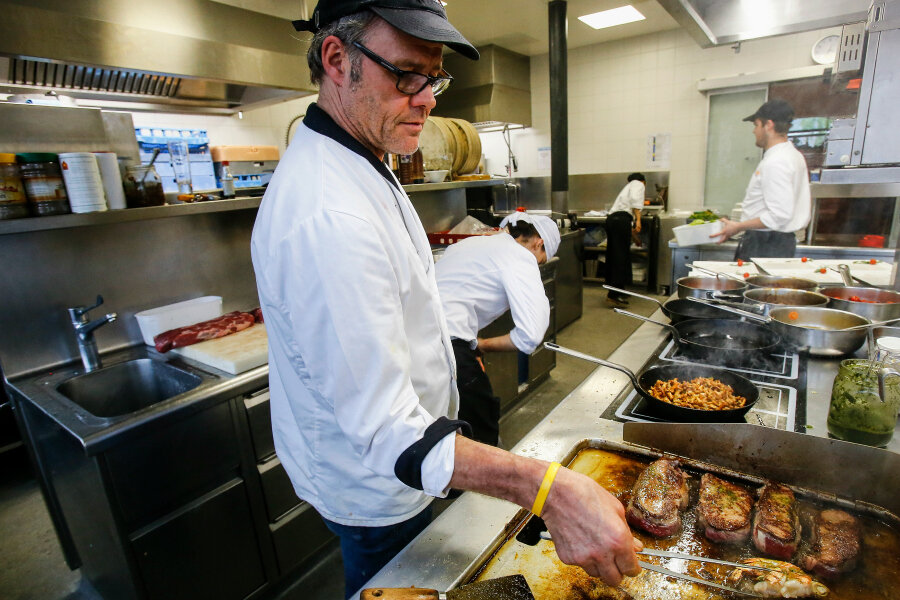Feeding and clothing ourselves wisely
Loading...
Americans today throw away a cornucopia of nutritious foods. They also discard used clothing – mountains of it.
The US government and food and clothing retailers are trying to change that.
Huge amounts of water, chemicals, and fuel are needed to produce food and clothing, two staples for every human on the planet. Sending a large percentage of what is produced into landfills wastes valuable resources.
The US Department of Agriculture estimates that 30 to 40 percent of the food produced in the US is not consumed. Acknowledging the problem, the federal government has committed to cut food waste in half by 2030.
Americans also throw away about 12.8 million tons of textiles each year – about 80 pounds for each person, according to the US Environmental Protection Agency.
Many restaurants are looking hard now at how they can reduce food waste, not only because it is the responsible thing to do but because it could save the industry as much as $1.6 billion a year, according to one estimate.
A number of changes are already under way. Some restaurants are offering smaller-sized boxes for take-home leftovers: They’ve found that diners are reluctant to ask for a large box and leave the food behind if the amount they want to take home is small.
A startup company in Britain called Too Good to Go has developed an app that allows restaurants and bakeries to advertise late-day discount prices on meals or baked goods that would otherwise be thrown away. In a test run in Denmark, the company claims to have already kept 100,000 meals from ending up in landfills.
The creativity of chefs is being tapped, too. Many are now buying blemished or misshaped (but tasty and nutritious) fruits and vegetables – that otherwise might go straight to a landfill – and using them as ingredients in recipes (who needs perfect-looking tomatoes, cucumbers, or peppers when you’re making gazpacho soup?).
Many dishes can be enhanced using parts of vegetables (carrot tops, onion peels, etc.) that once would have been thrown out. And if a restaurant notices that customers are returning a particular dish partly uneaten, it may reduce the size of the portion (and, we hope, the price).
Clothing retailers are beginning to accept worn garments at their stores. Leading the way is the international chain H&M, which says it took back some 12,000 tons of used clothing last year.
Second-hand clothing has been sold by shops and nonprofits groups such as Goodwill Industries for many years. And used clothing is already being remanufactured into lower-grade products such as carpet pads and insulation.
A company called Worn Again is using “discarded McDonald’s uniforms, Virgin Atlantic airplane seats, and prison blankets” to make “clothes, shoes, and bags,” reports a recent article at Yale Environment 360, a publication of Yale University.
The industry may be close to finding the “holy grail” – making recycled cotton and synthetic fibers cost-competitive with their newly manufactured counterparts. That could be a big environmental win.
Manufacturing a ton of new fabric requires nearly 200 tons of water, the Natural Resources Defense Council estimates. And growing cotton crops accounts for 24 percent of the insecticides and 11 percent of the pesticides sold worldwide, according to the World Wildlife Fund.
The concept that any material eventually becomes useless “waste” is being challenged. The “reduce, reuse, recycle” philosophy is helping humanity find more sustainable ways to feed and cloth itself.







